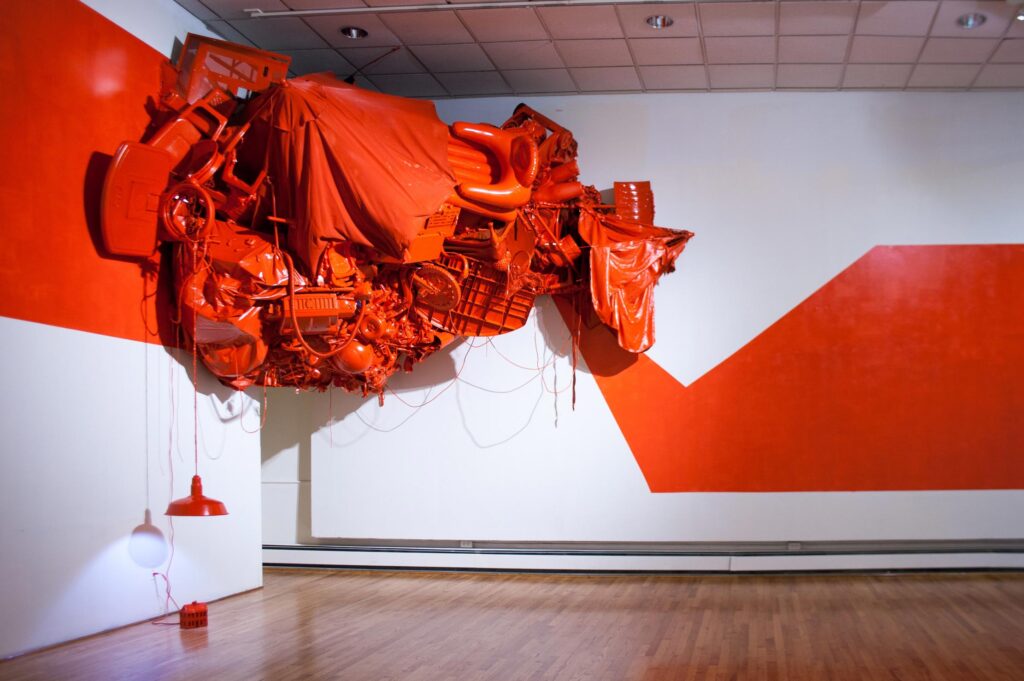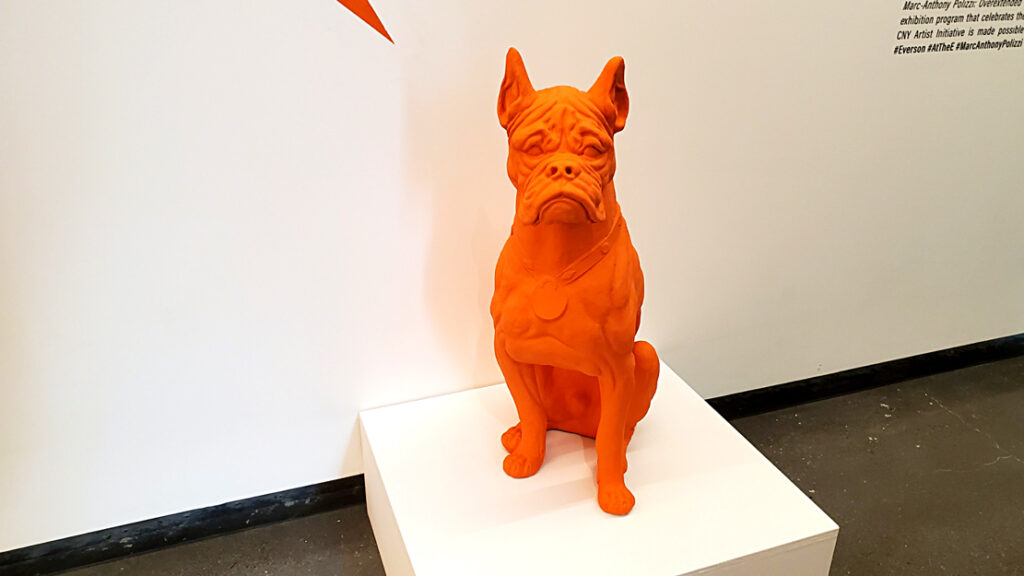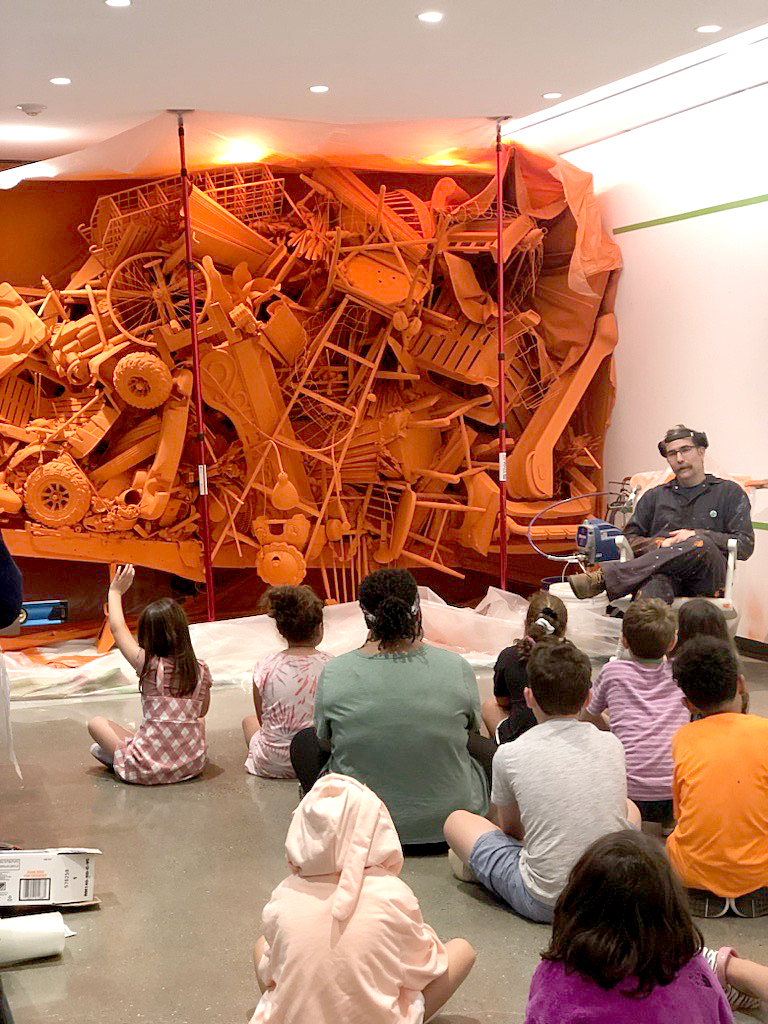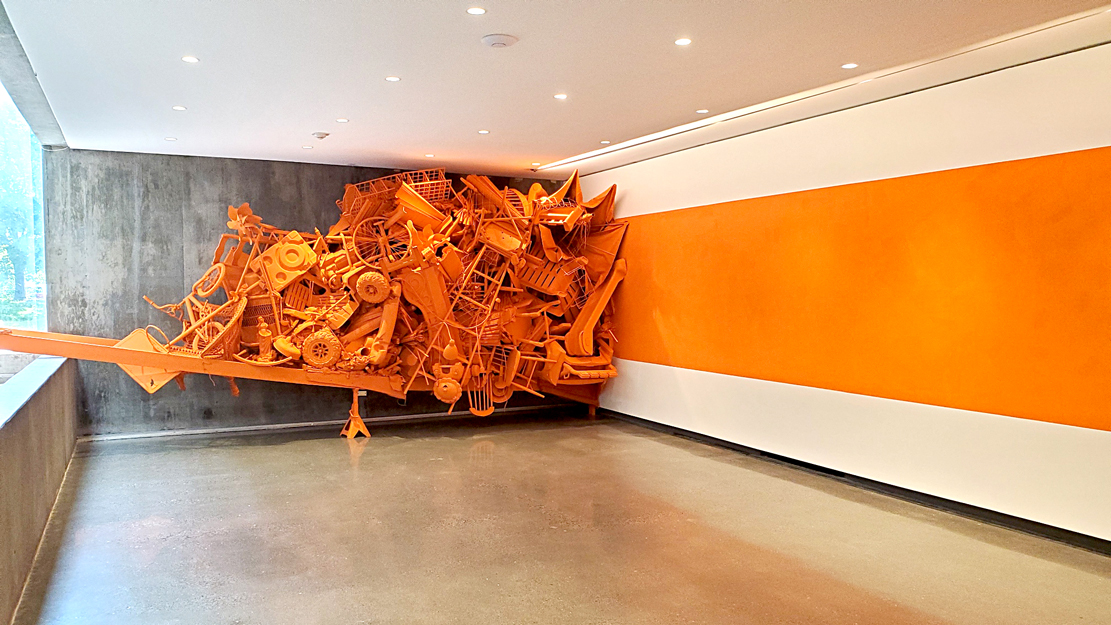
Like all of Polizzi’s installations, Overextended is a portrait of the community within which it was created. Polizzi collected the objects for the installation throughout Central New York, constructing a sculpture that contains the memories and experiences of regional residents. Yet the installation is more than a portrait of those living in Central New York. While the objects used were sourced locally, the experiences of overstimulation and overextension are universal. The orange of Overextended was inspired not by the athletic teams that drive our own local economy, but by the colors that drifting smoke from Canadian wildfires brought to New York’s skies this summer.
Marc-Anthony Polizzi: Overextended is part of the Everson CNY Artist Initiative, an exhibition program that celebrates the multi-faceted talents of regional artists. The CNY Artist Initiative is made possible with support from Terry and Bill Delavan.
Found Objects, Complicated Histories
Marc-Anthony Polizzi’s installation, Overextended, on display at the Everson Museum of Art as part of the CNY Artist Initiative, is composed of discarded objects like rocking chairs, box fans, and Hot Wheels cars. The objects making up the installation, which Polizzi found on curbs and lawns, suggest difficult histories—the end of childhood, a breakup, the death of a loved one. Constructing the installation from discarded things matters to Polizzi, a Utica native concerned with the economic condition of the Central New York community. The things that people get rid of, Polizzi suggests, paint a portrait of the community where they live.
Recently, I interviewed Polizzi about his art, artmaking, and the working class while he was in the Adirondacks, preparing to officiate a wedding on top of a mountain. No stranger to working odd jobs to make ends meet, Polizzi described his relationship to class as “the sculptor’s dilemma”: the sculptor wants to be considered working class because he works with working class materials, despite the potential monetary value of his art and the setting where his art is displayed. Polizzi noted the difference between objects found in wealthy areas, where residents are caught in an “endless loop of buy and replace,” and the objects found in working class neighborhoods, which are frequently well-used and worn. In wealthy and working-class communities, Polizzi noticed the prevalence of leisure-oriented, less utilitarian items like toys and games. In the wake of a global pandemic and recession, residents of Central New York have held on to furniture and more essential items rather than those associated with amusement and play.
Utica-based artist Marc-Anthony Polizzi’s sculptures and installations have appeared in galleries, artists’ spaces, universities, and opera houses across Central New York and the United States.
—By Misha Tentser





